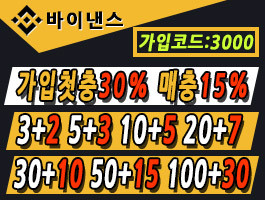3 Cushion Billiards Secrets That No One Else Knows About
작성자 정보
-
 Ursula Pulsford 작성
Ursula Pulsford 작성
- 작성일
본문
By following this comprehensive guide, you now have a solid foundation on how to play 3 cushion billiards like a pro. This might be one of the most comprehensive pool and billiards books ever written. The cloth used to cover the slate and the rails is designed specifically for pool tables. Italian slate has long been the preferred type, but Brazilian slate now has some proponents. Shims may be placed as needed under the slate liners to ensure a flat, level surface. Efren Reyes, the best player at kicking and safeties that’s ever played, was a professional level carom billiards player and played carom games often in his youth. Three-section table surfaces are preferred because the smaller sections are lighter and safer to lift, less prone to break, and easier to level during installation. Because playing surfaces were made of wood, they had a tendency to warp. It also contains multiple kicking systems that really come in handy when playing standard pool or pocket billiards. Although some inexpensive pool tables use synthetic slate or plastic honeycomb sheets, the preferred playing surface (and the only one sanctioned by the BCA) is natural slate.
Diamond- or circular-shaped sights embedded in the rail tops are usually made of mother of pearl, abalone shell, or plastic. Between 1800 and 1850, chalk was first used on cue stick ends to increase friction, leather cue tips were invented, diamond-shaped sights were added to rails, slate was introduced as a superior table surface, and vulcanized rubber (which maintained its properties regardless of temperature fluctuations) was quickly adapted for rail cushions. But I would, first of all, put eighty miles of assessed crop-land between myself and that d�k-bungalow before nightfall. For bleak, unadulterated misery that d�k-bungalow was the worst of the many that I had ever set foot in. He should marry. Katmal d�k-bungalow was old and rotten and unrepaired. If you have access to an experienced One Pocket player that is willing to give you basic lessons, or otherwise share their knowledge, you should definitely take advantage. If there is one must have book for your billiards collection, this would have to be it. Whether or not you are a beginner or an expert, this book should have a spot on your bookshelf.

It consists of two sections, the first is on standard pocket billiards, which makes up the majority of the book. Rails are usually produced by laminating two types of wood-an attractive, durable hardwood for the upper section and a functional softwood (like pine) or poplar for the lower section. This section consists of fundamentals, rules, general strategy, and the real gem-- the shots. Top Spanish Player Makes Hard Shots Look Easy! Canvas fabric is molded to the top and base of the cushion for proper rebound performance and secure attachment to the rail. The rail is faced with a rubber cushion so balls that strike it rebound predictably and remain in play. Rails were padded with tightly rolled cloth, producing a somewhat more predictable ball rebound. For one thing, it allows them to build on their favorable position, so when they finally do get a shot, they can run more balls. If you need just one or two balls and your opponent needs significantly more, generally your odds improve the less balls are in play, and their odds improve the more balls are in play - because of the possibility of stringing together a run with multiple balls in play!
" My response was simple, I said, Steve, we need you as much as you need us so let’s make this happen as soon as I return from a summer holiday that I had planned for months". As a beginner, this will make up for years of experience at the table. The wider strips are placed under the edges where pockets will be located. The function of six pockets around the edges of the table is unclear. 1 Edge liners made of 0.75-in (2-cm) thick 1 × 8-in (1.9 × 18-cm, finished size) and 1 × 4-in (1.9 × 9-cm, finished) lumber are glued to the bottom of the slate around the edges. Corners and top edges of the four sides must be carefully cut because once assembled, they will slope inward at a 15° angle from top to bottom. A groove is cut along the top edge to accept an anchoring strip for the cloth that will ultimately cover the rail. Slate is prepared at the quarry, where computer-controlled, diamond-blade saws are used in conjunction with laser measuring devices to cut it into very flat sheets 0.75-1 in (1.9-2.5 cm) thick. The slate sheets are shipped in sets of three panels, which are certified as having been cut from the same slab.
관련자료
-
이전
-
다음




